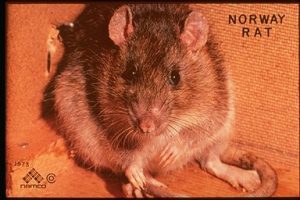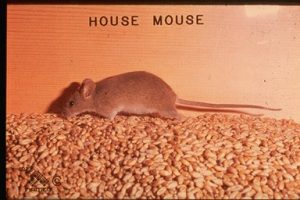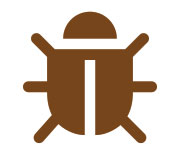
The most common rat in the Midwest is the Norway Rat (also called the brown or sewer rat) which is found everywhere from cities to farms. These rodents are destructive pests responsible for damage to grain, structures, and also pose significant health problems by spreading diseases to livestock and humans.
Signs of an infestation include droppings, evidence of fresh gnawing, elliptical-shaped burrows near buildings, in low vegetation, and around debris. Their tracks may also be seen in mud or on dusty surfaces (such as around grain elevators).
Identification and Habits: Norway rats are fairly husky, brownish to dark-gray rodents that weigh about 12 ounces. Adults are anywhere from 12 to 18 inches in length (including their 6 to 8-inch hairless tails). Their undersides vary from gray to yellowish white.
Rats will eat nearly anything, but prefer meats, fresh grain, dog food, etc., and require approximately 1 ounce of water per day. They are excellent climbers and only need an opening of 1/2 inch to gain access to a building. These rats can live up to 18 months. An average female will have 4 to 6 litters per year, with each litter consisting of 6 to 12 pups.
Control
Sanitation: The first step to rat control is proper sanitation. Good sanitation practices with regards to garbage, proper storage of dog food, and grains, along with elimination of harborage areas (keeping weeds down, eliminating trash piles, etc.) will effectively limit the number of rats that can survive in and around the home, farm, or business.
Exclusion: The most effective way to keep rats out of structures is to "build them out" by making it impossible for them to get inside. Exclusion can be achieved by inspecting the exterior of a building or home and sealing any openings larger than 1/4 inch. Special attention should be paid to doors, windows, screens, where utilities such as water or electric lines enter, and installing tight fitting grates over floor drains and sewer pipes.
Baiting and Trapping: Rats are very wary creatures, but can be controlled using baits, poisons, traps, or a combination of all three. Normally an exterior perimeter-baiting program is adequate for control and maintenance, especially when the above-listed sanitation and exclusion techniques have been implemented.











